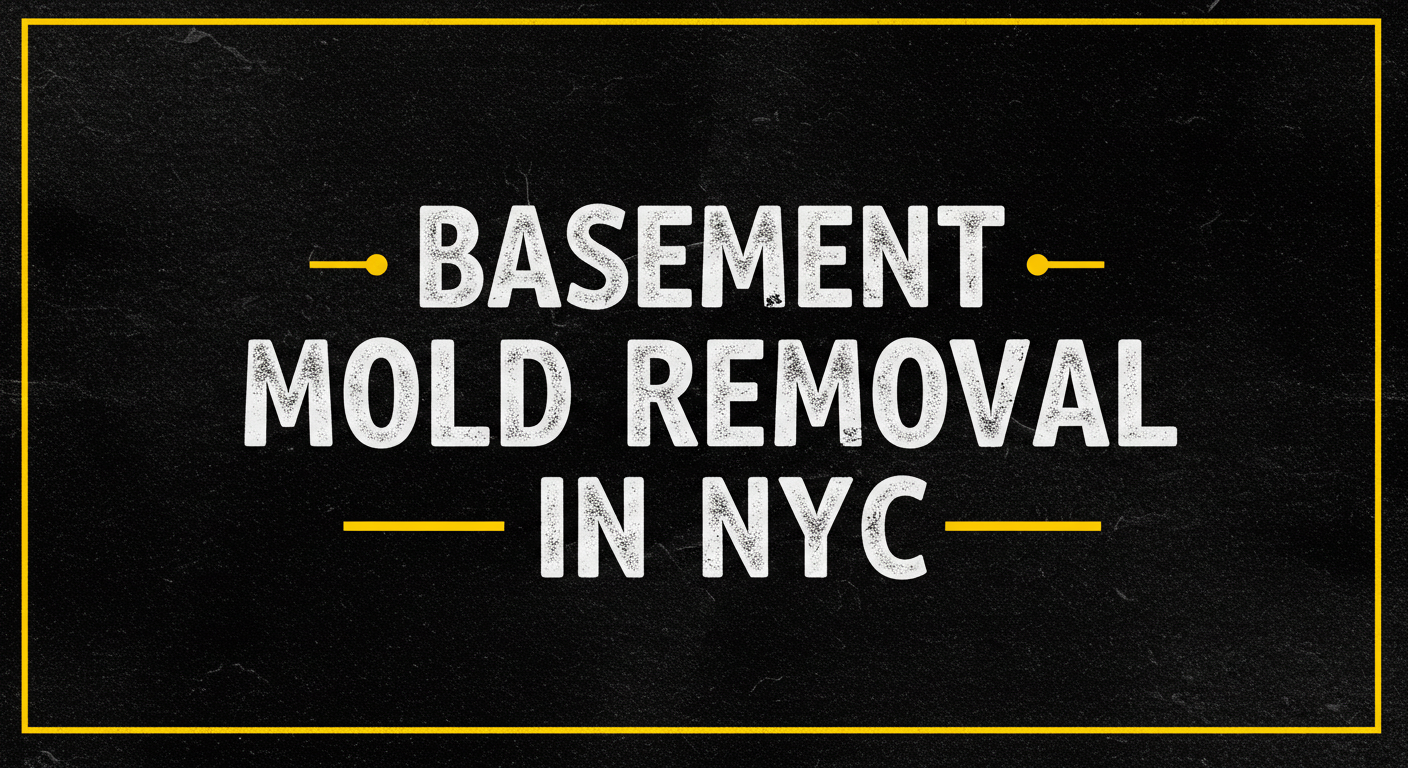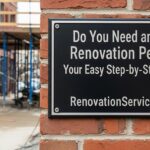Basement Mold Removal in NYC – Costs, DIY vs Pro & Health Rules
Basement mold removal isn’t a cosmetic job in New York City—it is a health requirement.
From Bay Ridge duplexes to Inwood garden apartments, our geology (high water table) and building stock (pre-war concrete and cinder-block walls) create perfect breeding grounds for Aspergillus, Penicillium and the dreaded black mold Stachybotrys.
This guide unpacks every angle:
- The science of why NYC basements stay damp
- New York State’s mold licensing law (Article 32)
- 2025 cost tables—DIY vs licensed remediation
- A step-by-step removal plan you can follow safely
- Permanent moisture-proofing upgrades so mold never returns
1. Why NYC Basements Grow Mold Faster Than Upstate Homes
In a temperate climate, mold spores are everywhere, yet they only colonize when three conditions line up:
- Moisture > 60 % relative humidity (RH) – NYC’s average RH is 67 % spring through October, and basements often climb to 80 %.
- Food source – Paper‐faced drywall, wood studs, carpet backing.
- Temperature > 40 °F – Basements sit in the sweet spot year-round.
1.1 The groundwater problem
Much of Brooklyn, Queens and the Bronx rides on glacial till only 4-8 ft above the local water table.
Even when walls look dry, capillary action wicks vapor through microscopic pores in concrete.
That keeps the back face of your drywall moist 24/7—prime mold habitat.
1.2 Steam mains & plumbing leaks
NYC still runs a 105-mile steam network under many streets. Hairline leaks inject 212 °F vapor into soil, raising foundation humidity.
Add aging galvanized pipes and uninsulated hot-water lines: you have a moisture cocktail that turns basements into terrariums.
2. Health Snapshot – What Mold Does to New Yorkers
- Asthma triggers: The NYC Department of Health reports emergency-room asthma visits rise 11 % in buildings where basement mold is visible.
- Mycotoxins: Stachybotrys chartarum releases trichothecene toxins that irritate lungs and skin.
- Structural damage: Mold digests cellulose, weakening studs and subfloors within 12 months.
*Source: NYC DOHMH Mold & Moisture Facts*
3. 2025 Cost Breakdown – DIY vs Licensed Mold Remediation
| Project scope | DIY cost / sq ft | Licensed pro / sq ft | Includes |
|---|---|---|---|
| Surface mildew (≤ 10 sq ft) | $0.70 | $2.50 | Scrub, peroxide, paint touch-up |
| Cavity mold in 1 wall (50 sq ft) | $2.10 | $6.10 | Drywall demo, HEPA vac, sealer |
| Stud bay + subfloor (200 sq ft) | $2.50 | $6.85 | Soda-blast, negative air, clearance test |
| Full basement gut (800 sq ft) | N/A | $4.90 | Assessment + third-party air samples |
**Why licensed pros cost more:** NY State’s Article 32 requires separate licensed Mold Assessors and Mold Remediators for areas over 10 sq ft. The assessor writes a protocol; the remediator follows it; a third-party lab must clear the air quality afterward. Labor, insurance and testing drive the price.
4. NY State Mold Licensing Law (Article 32) – What It Means for You
Introduced in 2016, Article 32 makes it illegal for a contractor to “test and remediate” the same job.
You (or your landlord) must hire:
- An NYS-licensed Mold Assessor – writes the plan and performs clearance testing.
- An NYS-licensed Mold Remediator – follows the written plan.
Failure to comply can trigger $2 000 fines per day. Check license numbers in the NY Department of Labor database before signing.
5. DIY Removal – Ten Critical Steps with Safety Gear
Use RH meter & concrete moisture probe to locate source.
6-mil poly walls, duct-taped seams, zipper doorway.
Box fan + filter exhausting outdoors; prevents spore spread.
N100 respirator, gloves, goggles, disposable suit.
Cut drywall 2 ft past visible mold; double-bag waste.
Wire-brush or sand wood until stain is gone.
Apply 3 % hydrogen peroxide and scrub; wait 10 minutes.
Vacuum surfaces twice—cross strokes catch residual spores.
Spray clear epoxy or white mold sealer on cleaned wood and concrete.
DIY air plates or pro spore trap; RH < 55 %, wood moisture < 16 %.
Tool checklist
- 60-pint dehumidifier (Energy Star)
- Moisture meter & RH meter
- HEPA vacuum (not shop vac)
- N100 respirator & Tyvek suit
- Soda-blast kit or 60-grit sanding sponge
6. Permanent Moisture-Proofing Upgrades
6.1 Drainage & grading
Slope soil 6 in over first 10 ft; extend downspouts four feet.
6.2 Vapor barrier + XPS board
Install 6-mil poly sheeting directly on concrete, then 1 in rigid foam before framing.
6.3 Sump pump & battery backup
Test monthly; clean float switch; replace battery every 3 years.
6.4 Dehumidifier sizing chart
| Area (sq ft) | Moderate damp | Very damp | Wet/basement |
|---|---|---|---|
| < 1 000 | 20 pints | 25 pints | 35 pints |
| 1 000–2 000 | 30 pints | 40 pints | 50 pints |
| 2 000–3 000 | 40 pints | 50 pints | 60 pints |
7. Case Study – Brooklyn Heights Brownstone Basement
Problem: Family noticed musty odor; air test showed 14 000 spores/m³ (Stachybotrys).
Work: 350 sq ft mold removal, soda-blast joists, install interior French drain, apply elastomeric waterproof coating.
Cost: $6 800.
Result: Post-clearance spore count dropped to 220 spores/m³—below outdoor ambient. RH now stable at 49 % year-round.
8. Frequently Asked Questions
Is bleach safe for mold cleanup?
Bleach evaporates before penetrating porous surfaces. The EPA recommends detergent or 3 % hydrogen peroxide.
Do I need an air scrubber?
For areas larger than 10 sq ft, yes—HEPA scrubbers capture airborne spores and keep negative pressure.
Can I paint over mold with Kilz?
Only after removal and drying. Encapsulant must bond to clean, dry substrate or it will peel.
How long should I run a dehumidifier after remediation?
At least one heating/cooling season while monitoring RH below 55 %.
Is attic mold covered by Article 32?
Yes—any indoor mold > 10 sq ft triggers NYS licensing requirements.
Related Resources
Need Professional Mold Remediation?
Call 347-455-1741 or email info@renovationservices.com
for a free basement mold assessment and same-day action plan.






